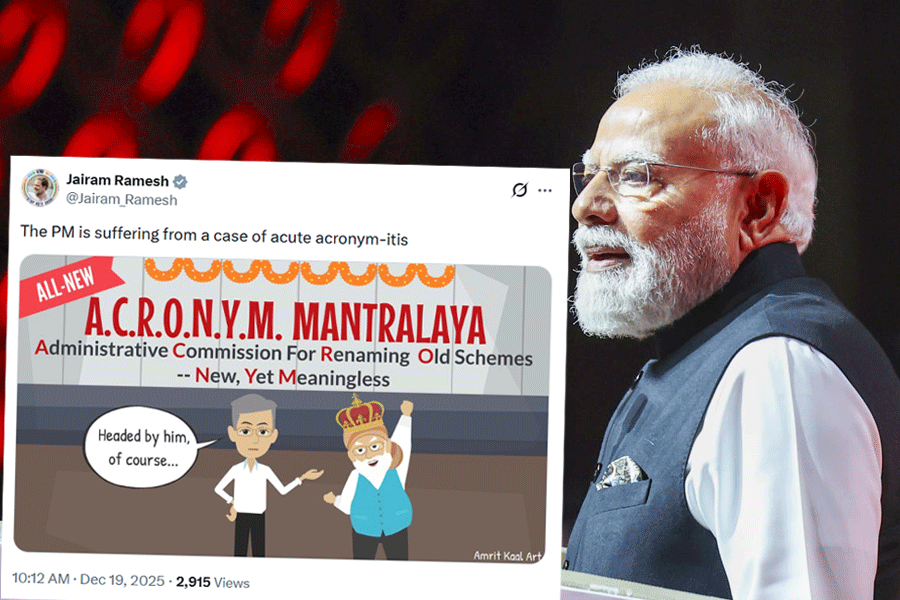 |
What do women want? If any man could answer that question, he would probably make a fortune. That’s life. On the job front, however, there is a little more clarity on the demands of the fairer sex. Many women would sum it up in one word — equality.
There is a basic problem, however. In India, the women workforce participation rate is 28 per cent, which is substantially lower than other Asian countries such as Singapore, China and Hong Kong, according to FLEXI Careers India. (Flexi Careers is a social enterprise with a mission to achieve the right gender ratio in organisations.) In many core industries in India, the rate is as low as 8 to 10 per cent. This means that for any given job, there are more men competing than women. Fewer women make it to the top because there are fewer to start with.
“That’s an excuse, of course,” says Mumbai-based HR consultant D. Singh. “Women have special needs. You have to cater to them. If you do, you will have many more women climbing the ladder.”
A McKinsey report titled Making a Breakthrough, which is part of a continuing series on “Women Matters”, says that “the reasons why women falter vary”. At the entry level, businesses viewed as male dominated attract fewer women. Further up the ladder, many women leave their organisations for family commitments. Others get stuck on the ladder after returning to work because they lack the network and sponsors their male colleagues have developed. Also, they want work-life balance.
A recent survey — 2013 Today’s Professional Woman Report — gives some idea of what else they regard as important. The roadblocks to career advancement are many (see box). But women are prepared to sacrifice professional achievement for balance and flexibility. Telecommuting heads the flexibility list: 42 per cent wish they could work from home more. Of those that work from home at least once a week, 90 per cent say they’re equally or more productive than when they’re in the office. On a broader issue, women’s three biggest work frustrations: not getting paid enough, office politics, and being underutilised.
In India, corporates have finally begun moving beyond lip service. Realising the talent they are losing, farsighted companies are wooing back women who have taken a break. IBM India has launched a campaign titled Bring her Back. The RESTART programme at GE’s John F Welch Technology Centre, Bangalore is an initiative that focuses exclusively on hiring women scientists and engineers who have taken a career break.
At Hindustan Unilever Ltd (HUL), Career by Choice aims to bring women back to work. There is a unique flexi-scheme under which two executives do the same job. One works three days a week; the other works the next three days. They share an email ID and take over seamlessly when it’s their turn. Of course, this applies to only certain types of jobs. One thing to note about HUL is that these initiatives are not gender specific; they are open to men also.
The most visible initiative is from the House of Tata. The Tata Second Career Internship Programme for Women was launched in March 2008 on International Women’s Day. “It is a career-transition management programme for women professionals who have taken a break of six months or more for any reason, and wish to re-enter professional space. The programme provides opportunities for such women to take on flexi-hour assignments with various Tata group companies.”
There are also several consultants who have got into the act. Avtar-I-Win provides “flexi-career opportunities for women seeking work-life balance”. It sells recruitment services to corporates, so there is money to be made out there. Another such organisation is Fleximoms which enables “work-flex readiness for corporate India and women professionals managing in multiple roles and exploring smarter work options.”
It never rains but it pours. Professional women are today being wooed by everybody. And that, to answer our original question, must be something that women want.
UNFAIR DEAL?
The roadblocks to career advancement for women
Lack of opportunity, time, and loyalty hold them back: Only 38% of professional women think they will rise to a more senior leadership position in their companies. Those who do not cite lack of opportunities to be promoted (41%), reluctance to take time away from their families or personal lives (30%), and not being interested in staying at their companies long enough to advance (20%) as the top three reasons they are unlikely to advance.
Women’s reluctance to ask for a raise may be keeping them from getting what they want: Only one in four professional women have asked for a raise in the past year. Yet 75% of those respondents who asked for a raise received one, and nearly half received a raise equal to or more than what they expected.
Women breadwinners are not immune to the gender wage gap: Female breadwinners make less money than their male counterparts. When a woman is the breadwinner in her household, she makes an average of 31% more than her partner. When the man is the breadwinner, the gap is 42% wider.
Mentorship is not a priority for most: More than half the women do not mentor others, but the trend may be changing. Gen Y respondents reported that they feel more supported by senior female executives at their company (60% vs. 46% of those aged 35-54) and they’re also more likely to seek out a mentor: 67% of women aged 22-34 have had a mentor or sponsor, compared with only 49% of those over 45.
Source: 2013 Today’s Professional Woman Report











